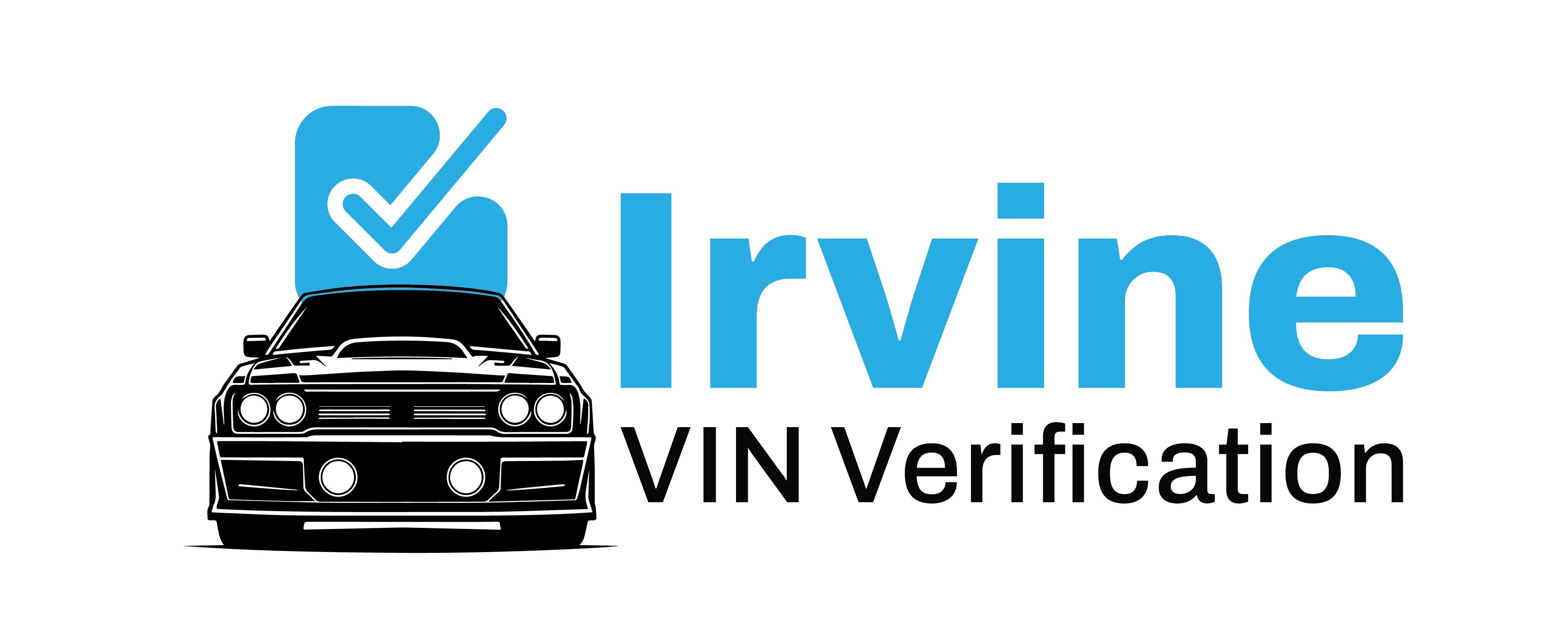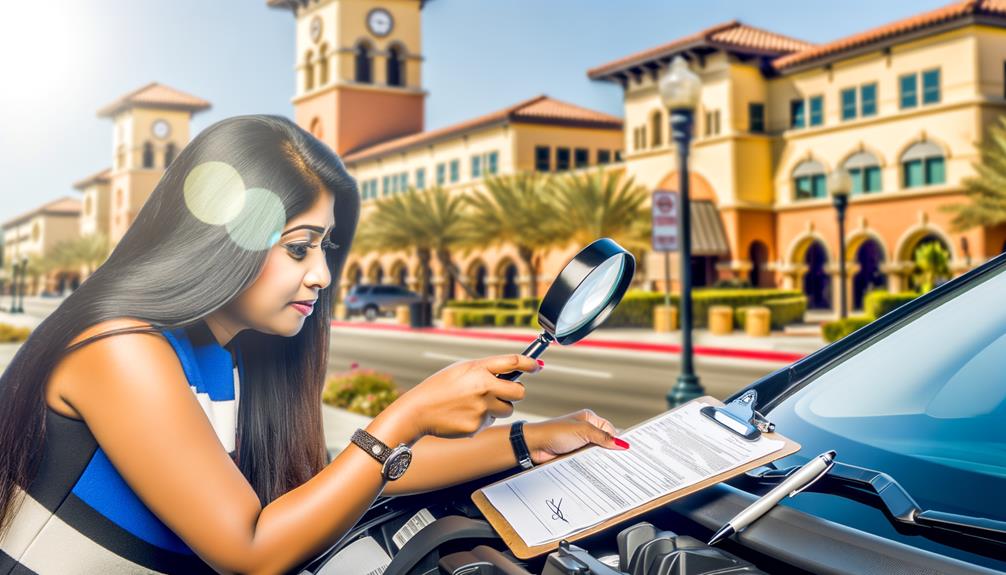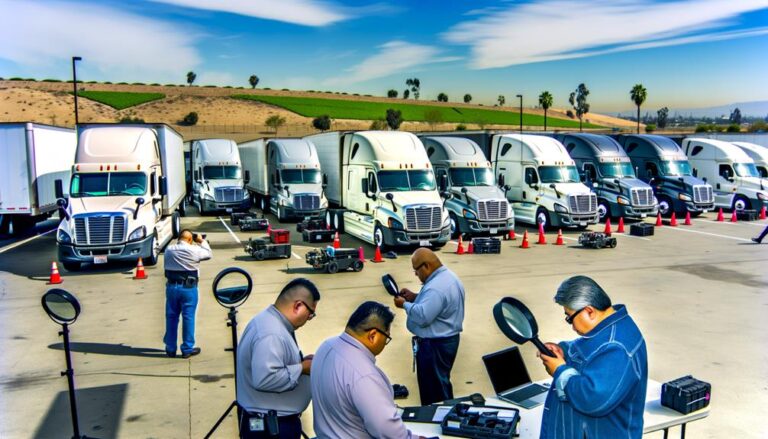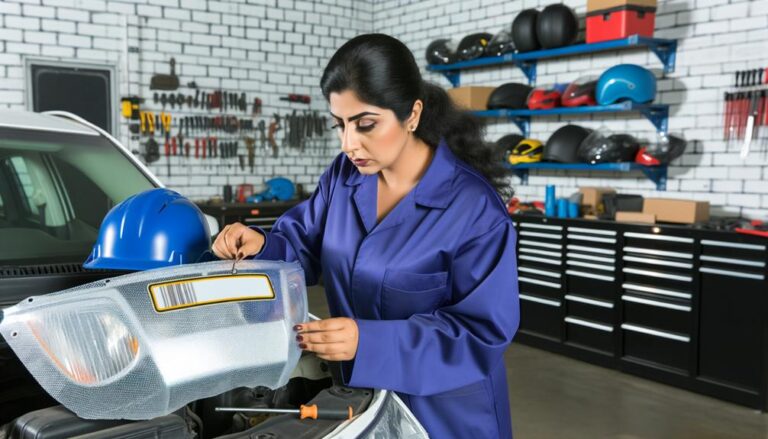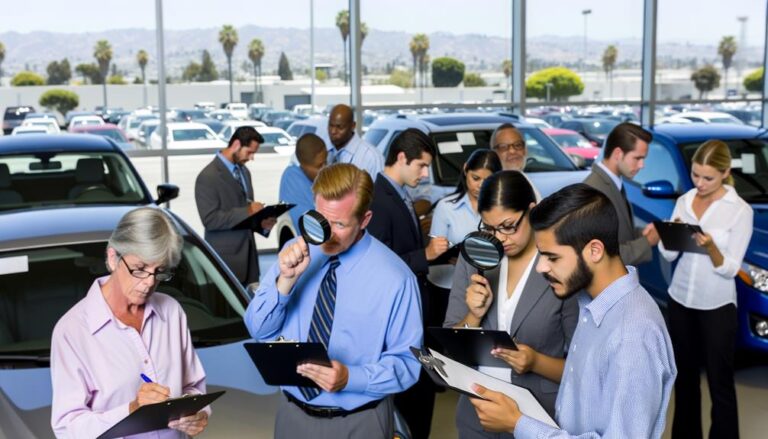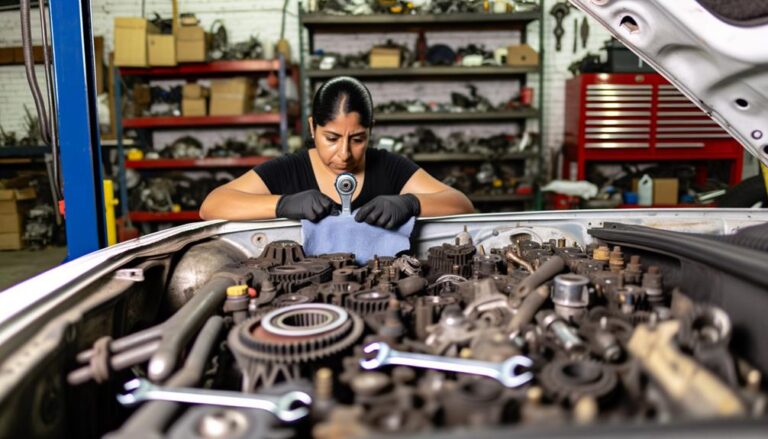To start your VIN verification in Irvine, you'll need to gather essential documents like proof of ownership, state ID, and, if applicable, a smog certification. Choose from various locations—local DMV, California Highway Patrol, or private services like Quick VIN Verifications, with costs varying based on location and convenience. It's best to schedule an appointment after preparing all documents and making certain the VIN plate is clear for inspection. At your appointment, a verifier will inspect the VIN, check compliance, and fill out the necessary REG 31 form. Completing this form right guarantees a smooth registration process. Exploring these steps further can help streamline your experience.
Understanding VIN Verification
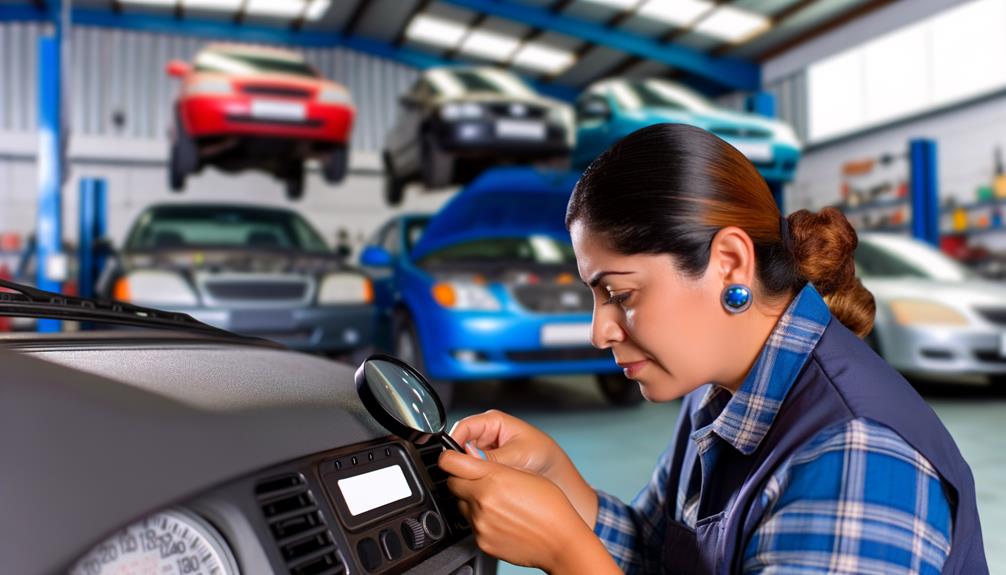
VIN verification is an essential step you must take if you're registering an out-of-state vehicle in California. This process, carried out by licensed VIN verifiers, isn't just a formality; it's your gateway to guaranteeing that your vehicle complies with local laws and is rightfully yours.
During the verification, a verifier will perform a physical inspection to confirm the vehicle identification matches the documents you hold. This is important for theft prevention and ownership confirmation. In addition to confirming the VIN, the verifier also checks the vehicle's odometer, recording its mileage which is significant for evaluating the vehicle's condition and history.
The inspection focuses on the 17-character VIN, which reveals not just the car's make and model, but also its year and place of manufacture. This detailed scrutiny helps maintain compliance with California DMV regulations and guarantees that your vehicle meets safety and environmental standards.
The findings are then recorded on the REG 31 form, a fundamental document for your vehicle registration process.
Gathering Required Documents
Before you head out for your VIN verification appointment in Irvine, make certain you've gathered all the necessary documents.
First off, your vehicle title or current registration is vital. They serve as your proof of ownership, a non-negotiable in the verification process. Don't forget your state-issued ID, like a driver's license, to establish your identity.
If you've recently bought your vehicle, bring along the bill of sale, and if there are any, the lien releases. These documents clear any doubts about the ownership and claims on the vehicle.
Furthermore, jot down the latest odometer reading—it's required. For those driving in from out of state, California demands a smog certification, so make certain that's checked off your list too.
Additionally, if your vehicle is still under financing and lacks a traditional title, you might be eligible for a Golden-Rod Title which facilitates the registration process without a completed title.
You'll also want to know exactly where your VIN is located on your vehicle. This isn't just busy work; it's essential.
The verifier will match the VIN on your vehicle with the one on your documents. This step guarantees everything is legitimate and up to scratch, paving the way for a smooth verification process.
Choosing Verification Locations
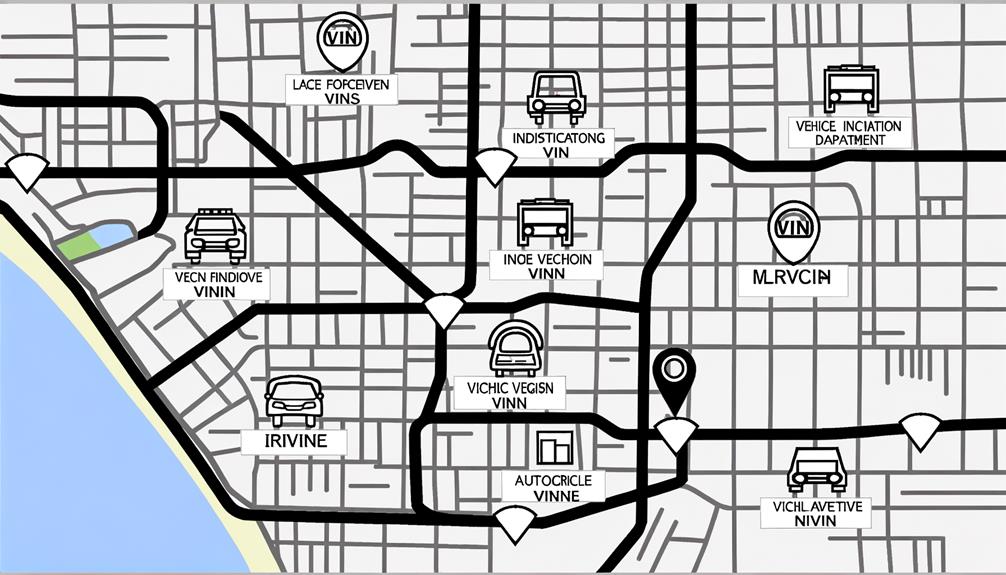
Once you've gathered all your necessary documents, the next step is to choose a suitable location for VIN verification. In Irvine, you've got plenty of options that cater to your freedom of choice and convenience.
First off, consider Quick VIN Verifications. They provide both in-office services at $75 and mobile services starting at $125. If you're all about convenience and don't mind the extra cost for comfort, their mobile option could be perfect, especially if you're juggling a busy schedule. They cover a vast area including Orange, Riverside, San Bernardino, and San Diego counties.
On the other hand, if you're looking to cut costs, the California DMV and the California Highway Patrol offer no-cost VIN verification services. Remember, these don't include mobile services, so you'll need to visit their offices. The DMV requires an appointment, which you should schedule in advance, while CHP needs a referral but is a solid choice if you're looking for licensed verifiers without an impact on your wallet.
Lastly, if you're an AAA member, don't forget to check out their complimentary services, although they're limited to specific vehicle types and don't include mobile services.
Choose wisely based on what fits best with your needs and lifestyle!
Scheduling Your Appointment
To confirm a seamless VIN verification process, you should schedule your appointment as soon as you have all the necessary documents ready. This includes your vehicle title, registration forms, and proof of ownership.
Contact Quick VIN Verifications at 714-627-9211 or take advantage of the convenience of online scheduling. This flexibility allows you to fit this essential task into your busy schedule effortlessly.
If you prefer to avoid phone calls, simply email your appointment request. This method not only saves time but guarantees you get a prompt response. Remember to mention your license plate number in your communication to streamline the process further.
With various appointment times available, you can choose the one that best suits your needs, whether it's during office hours or through mobile verification services.
The verification fee is approximately $25 for private services. However, Quick VIN Verifications offers in-office verification for $75 and mobile services for $125.
This slight premium reflects the freedom and convenience of choosing a service that travels to your location, saving you both time and effort in the verification process.
Preparing for Verification
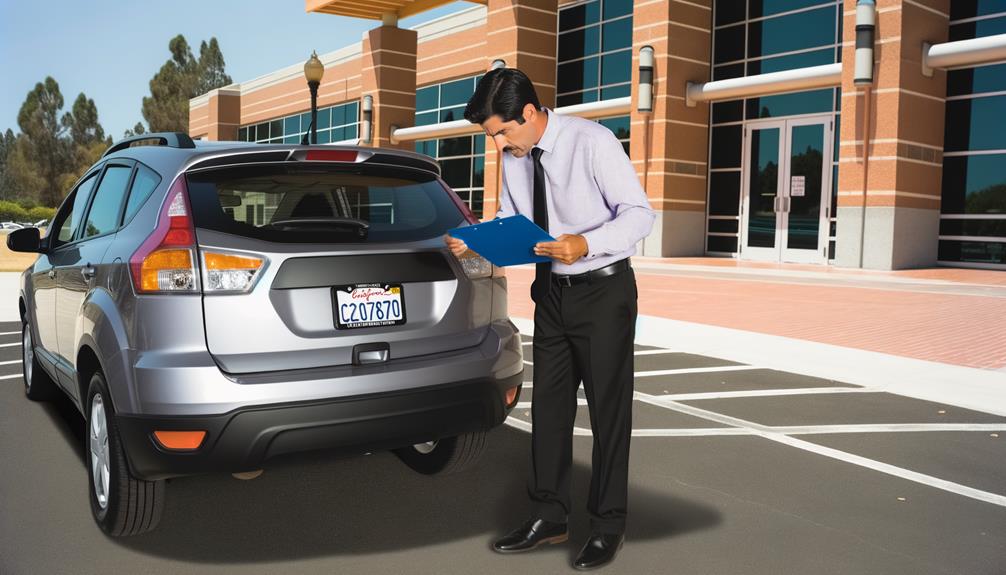
After scheduling your appointment for VIN verification, it's important to prepare thoroughly to guarantee the process runs smoothly. First, gather all necessary documents, including your vehicle title, registration forms, proof of ownership, and a valid state-issued ID. These are essential to guarantee DMV compliance and facilitate a smooth inspection process.
Make sure the vehicle details on your documents, such as make, model, year, and VIN location, accurately match your actual vehicle. Any discrepancies could delay verification and limit your freedom to use your vehicle as you wish.
Next, check that the VIN plate on your vehicle is clean and accessible. This not only shows respect for the process but also speeds things up, allowing the verifier to easily access and confirm the VIN without hurdles.
Lastly, be ready with the verification fee of approximately $25. Have your payment options prepared; whether it's cash, check, or digital payments, being prepared helps avoid last-minute hassles at the verification site.
Conducting the Inspection
During your VIN verification appointment, the verifier will document key details of your vehicle such as the year, make, model, and the precise location of the VIN. This initial step guarantees that the VIN authenticity is verified, safeguarding your freedom to navigate without legal hindrances tied to vehicle identity concerns.
The inspection doesn't stop there. Your verifier will closely examine the VIN for signs of tampering or alterations—an essential check to maintain the integrity of your vehicle's history. They'll also scrutinize the odometer reading, confirming that the mileage reported is consistent with the car's documented history, and pinpoint any discrepancies that might suggest odometer fraud.
Furthermore, compliance with safety standards is non-negotiable. The verifier will review the federal certification label, particularly if your vehicle was manufactured after 1980. This review guarantees that your vehicle meets necessary safety benchmarks, reinforcing your security on the road.
Lastly, the inspection includes evaluating the physical aspects of your vehicle, such as the number of wheels, axles, and type of fuel used. Each element is checked for compliance, guaranteeing every part of your vehicle aligns with regulatory standards, thereby facilitating a smooth and unrestricted driving experience.
Completing Verification Forms
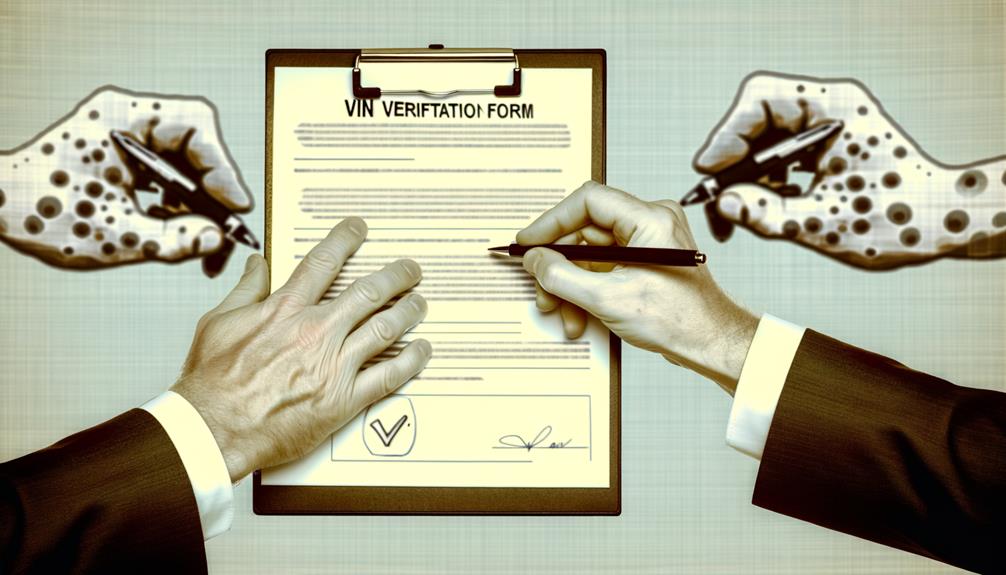
Once your vehicle passes the inspection, you'll move on to filling out the necessary verification forms. This step is important in the VIN verification process, primarily involving the REG 31 form. Here, you'll document essential vehicle details such as the year, make, model, and the exact location of the VIN. It's your ticket to ensuring that all the vehicle identification info matches the records, paving the way for a smooth DMV registration.
You'll also need to accurately record the odometer reading and verify the number of wheels and axles. This info is significant, not just for compliance proof but also for maintaining the integrity of your vehicle's data. Make sure every detail, including the license plate number and fuel type, is accurately captured on the REG 31 form. Any discrepancy can snag your freedom to roam with your vehicle cleared and registered.
Lastly, don't forget to have the verifier signature and date on the form. It's the final step in affirming that all documentation requirements are met. Keeping a copy of this completed form isn't just recommended; it's imperative for safeguarding your compliance and freedom in future verifications or DMV queries.
Addressing Verification Issues
If you encounter any discrepancies in the VIN verification process, it's crucial to act swiftly. Start by gathering all necessary documentation, including titles and previous registration papers. This step will prepare you to address and clarify any issues directly with the verifier.
Make certain your vehicle isn't classified as a revived salvage or junked, as these categories can greatly complicate the verification process.
Communication is key. Speak openly with your verifier about the discrepancies. They can offer guidance on how to resolve issues related to VIN authenticity or missing documentation.
If your vehicle was manufactured in 1980 or later and lacks a federal certification label, be ready to provide additional documentation. This proactive approach can help smooth out potential roadblocks.
Should these initial steps not resolve the verification issues, remember that the California Highway Patrol may become involved. They can conduct further inspections or offer referrals to guarantee that every aspect of your verification process complies with state regulations.
Don't hesitate to reach out to them if your situation doesn't clear up with standard procedures, as their expertise can be invaluable in such cases.
Finalizing the Verification
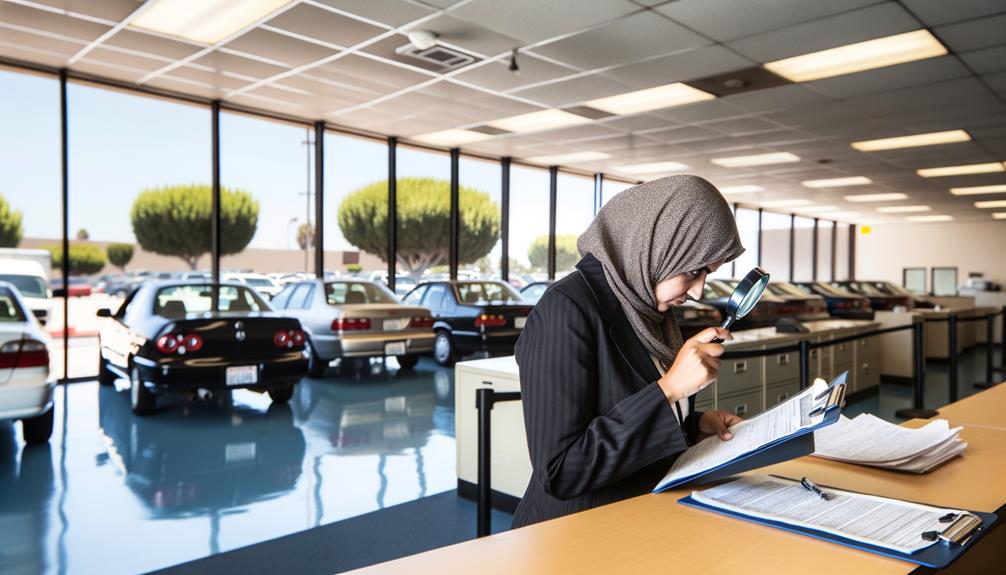
After addressing any discrepancies with your verifier, the next step is finalizing the verification. You're nearly at the finish line! Confirm your REG 31 form is accurately filled out and signed. This form is your golden ticket for smooth sailing with the California DMV. It's proof that your vehicle complies with all necessary regulations.
Next, gather all required documents that support your VIN verification. This might include titles, registration papers, or proof of insurance. You're confirming everything is in check to prevent any future registration issues.
Submit these, along with your REG 31 form, directly to the DMV. Remember, this isn't just paperwork; it's your freedom to ride without legal hitches.
Now, let's talk payment for the verification service. You've got options here—cash, check, or modern conveniences like Zelle or Venmo. Choose what's easiest for you. Freedom means having choices that fit your lifestyle.
Maintaining Verification Records
While finalizing your VIN verification is essential, maintaining accurate records of the process is equally important. Once you've completed the REG 31 form, it's imperative to retain a copy. This serves as proof of compliance for future reference and facilitates smooth DMV processing.
You'll want to store this with any receipts or invoices related to your VIN verification. These documents aren't just paper; they're the backbone of your accurate financial records and can be essential for tax purposes.
Keep all these verification-related documents in a locked file or a secure digital database. This step protects sensitive information and upholds your freedom to manage your affairs privately and securely. According to California guidelines, you should maintain these records for at least three years. This guarantees that you can easily retrieve them during audits or inquiries, safeguarding your vehicle ownership rights.
Don't forget to regularly audit your verification records. This isn't just about compliance—it's about taking control. Regular audits help you identify and rectify any discrepancies, guaranteeing that your documentation of vehicle ownership and compliance remains impeccable.
Frequently Asked Questions
How to Get a VIN Verification in California?
To get a VIN verification in California, you'll need to present your vehicle's title, a valid ID, and possibly smog certification. Schedule an appointment through Quick VIN Verifications or check the DMV for free services.
Does AAA Do VIN Verifications in California?
Yes, AAA does perform VIN verifications in California, but you'll need to check if your vehicle type qualifies. Remember, it's free for members, although you must visit a physical location; no mobile service is available.
What Is VIN Validation?
VIN validation guarantees your vehicle's identity matches official records, safeguarding you from fraud and theft. It involves checking the VIN, odometer, and safety labels, typically completed by licensed verifiers in about 15 to 30 minutes.
